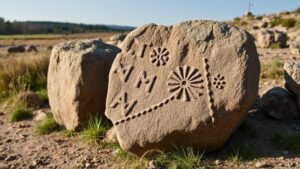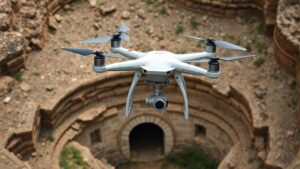Investigating the mythical city of Rhodos, said to be an ancient hub of knowledge.
Investigating the Mythical City of Rhodos
The city of Rhodos, or Rhodes, is often portrayed as a mythical hub of knowledge, culture, and innovation in the ancient world. This article delves into its historical significance, architectural marvels, and contributions to knowledge that have contributed to its legendary status.
Historical Context of Rhodos
Situated in the southeastern Aegean Sea, the island of Rhodes has been inhabited since prehistoric times. Its strategic location made it a vital trading post between Europe, Asia, and Africa. By the 5th century BC, Rhodes had established itself as a dominant maritime power, significantly due to its naval prowess.
One of the pivotal events in the history of Rhodes occurred in 408 BC when three settlements–Ialysos, Lindos, and Kamiros–united to form a single city. This unification was led by the philosopher and statesman Cleobulus, who emphasized the importance of collaboration and governance, adding to the citys reputation for intellectual pursuits.
Cultural and Intellectual Contributions
Rhodes was not only a center for trade but also a significant hub for knowledge and culture. Schools of philosophy thrived here, attracting thinkers and scholars from across the ancient world. Among its notable institutions was the famous Library of Rhodes, which housed a vast collection of works from various fields such as science, literature, and philosophy.
The Rhodian school of rhetoric was particularly renowned, influencing the art of public speaking and communication. Rhodian orators were known for their eloquence, which can be traced in the works of rhetoricians like Dionysius of Halicarnassus.
The Colossus of Rhodes
One of the most iconic symbols of Rhodes is the Colossus of Rhodes, which was constructed between 292 and 280 BC to celebrate the islands victory over Cyprus. This giant statue, standing approximately 33 meters high, represented the sun god Helios and was considered one of the Seven Wonders of the Ancient World.
The Colossus was not merely a statue but a testament to the ingenuity and artistic skills of the Rhodian people. It exemplified advanced engineering techniques of the time, including the use of iron bars and a complex internal support system. Though destroyed by an earthquake in 226 BC, its legacy continues to inspire architects and engineers to this day.
Rhodes Today: A Legacy of Learning
Today, Rhodes continues to thrive as a center of education and history. The island is home to various universities and research centers that promote cultural heritage and academic studies. This modern embodiment of Rhodos reflects the community’s enduring commitment to knowledge.
Rhodes archaeological sites, such as the ancient city of Kamiros and the Acropolis of Lindos, draw thousands of tourists, scholars, and history enthusiasts annually. These sites not only preserve the rich heritage of the island but also serve as a canvas for ongoing research and discovery.
Conclusion: Lessons from Rhodos
Investigating the mythical city of Rhodos reveals how the interplay of politics, culture, and education can foster an environment of innovation and learning. Its contributions to oratory, philosophy, and marine engineering underscore the significance of the island in the broader context of ancient civilizations.
As we reflect on the lessons from Rhodos, we can apply these to todays world by promoting collaboration, valuing education, and exploring innovative solutions to contemporary challenges.
- Value collaboration and unity in diverse communities.
- Encourage the pursuit of knowledge across disciplines.
- Appreciate historical insights and their relevance to modern challenges.



